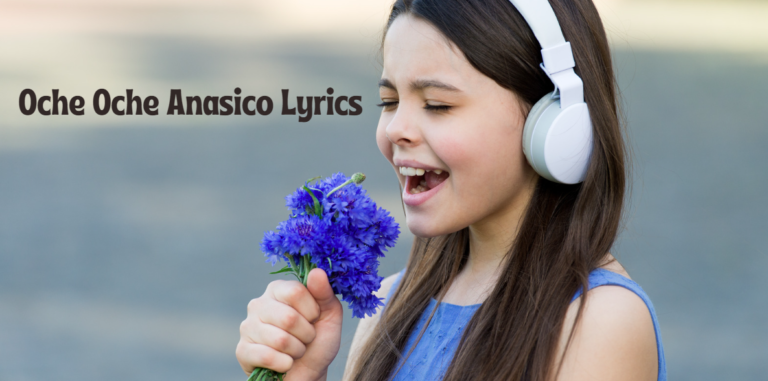DigitalNewsAlerts: The Ultimate Guide to News Updates in the Digital Age
Introduction to DigitalNewsAlerts
In an era where information moves at lightning speed, digitalnewsalerts have emerged as a crucial tool for delivering timely news updates to users’ devices.
With the proliferation of smartphones and tablets, the use of push notifications to deliver news directly to users has reshaped the way we consume information.
Whether it’s breaking news, political updates, or personalized stories, digitalnewsalerts keep users informed in real-time, providing a seamless experience between news providers and consumers.

Also Read: Exploring 1tamilmv.prof: A Comprehensive Guide to Tamil Entertainment Streaming
What Are DigitalNewsAlerts?
Digitalnewsalerts refer to notifications pushed to users’ devices, such as smartphones or tablets, from news organizations. These alerts are designed to deliver real-time updates on a variety of topics such as breaking news, weather updates, sports, politics, entertainment, and other information personalized to a user’s preferences.
With people becoming more selective about how they consume news, digitalnewsalerts cater to the need for rapid, relevant, and concise updates. These alerts act as bridges between news organizations and the modern consumer who demands news on the go.
How DigitalNewsAlerts Work
The technology behind digitalnewsalerts revolves around push notifications. When a news source publishes new content, users who have opted into notifications from a specific news app or website receive a message directly to their devices. These alerts can include headlines, short descriptions, or links to full articles.
The process typically works as follows:
- User Opt-in: Users download a news app or subscribe to a website and allow push notifications.
- News Update: News outlets create and publish a story.
- Push Notification Sent: The news outlet’s server sends the push notification to users’ devices, using services such as Apple Push Notification Service (APNS) or Firebase Cloud Messaging (FCM).
- User Engagement: The user sees the alert and can tap to read the full story or ignore it.
This seamless process allows consumers to stay informed without the need for actively browsing news websites.
The History of Push Notifications in News Delivery
Push notifications have evolved from a niche technology to a mainstream news delivery system in the past decade. In the early days of digital media, users relied on RSS feeds or email newsletters to receive updates from news sources. However, as mobile technology advanced, so did the methods for delivering news.
Evolution of DigitalNewsAlerts
- Pre-2000s: News delivery was primarily through traditional channels like TV, radio, and newspapers.
- 2000-2010: The first generation of online news alerts came through email subscriptions and RSS feeds.
- 2010-2015: As mobile apps grew in popularity, push notifications became an efficient way for news organizations to deliver updates.
- 2015-Present: Today, digitalnewsalerts have become the dominant method for delivering breaking news directly to mobile devices.

Also Read: Exploring 1tamilmv.prof: A Comprehensive Guide to Tamil Entertainment Streaming
Why DigitalNewsAlerts Matter in Today’s News Landscape
Instant Information in a Fast-Paced World
The modern world thrives on immediacy. Consumers no longer have the patience to wait for the evening news broadcast or the next day’s newspaper. With the rise of 24/7 news cycles, digitalnewsalerts fill the gap by providing breaking news and real-time updates.
Catering to User Preferences
Digitalnewsalerts allow users to tailor their news experience. By opting into specific topics, users can receive updates only on subjects they care about. This personalization enhances engagement and ensures users aren’t overwhelmed by information they find irrelevant.
The Role of DigitalNewsAlerts in Journalism
For journalists and news outlets, digitalnewsalerts provide an avenue to quickly disseminate stories, maintain reader engagement, and stay relevant. Alerts often drive traffic back to websites or apps, increasing reader interaction with full stories, videos, or live updates.
Key Benefits of DigitalNewsAlerts
1. Real-Time Updates
Digitalnewsalerts ensure that users receive news in real time, which is critical for fast-paced events like elections, sports, or natural disasters.
2. Personalized News
Many platforms allow users to customize their alerts. This feature ensures users receive only the news they want, increasing engagement and satisfaction.
3. Increased Traffic for News Websites
By sending push notifications that link back to full articles, news outlets can significantly increase traffic to their websites, especially for breaking news.
4. User Retention and Engagement
For news apps, push notifications are a key tool in user retention. Alerts that provide timely, relevant information keep users engaged and returning to the platform.
Types of DigitalNewsAlerts
1. Breaking News Alerts
Breaking news alerts are the most common form of digitalnewsalerts. They inform users about major events as they happen, ensuring the public is aware of significant developments.
2. Personalized Alerts
Users can choose specific topics of interest, such as politics, sports, or entertainment. These personalized alerts cater to individual preferences, making the news more relevant.
3. Weather Alerts
Digitalnewsalerts often include weather notifications, particularly for severe conditions such as storms, tornadoes, or heatwaves.
4. Financial and Stock Market Alerts
These alerts inform users about major shifts in the financial markets or important economic news, such as changes in stock prices or economic reports.
Challenges and Concerns with DigitalNewsAlerts
1. Notification Fatigue
One of the main challenges of digitalnewsalerts is notification fatigue. If users receive too many alerts, especially those deemed irrelevant, they may turn off notifications entirely, reducing engagement.
2. Privacy and Data Concerns
As users opt into personalized alerts, there are concerns about how much data is being collected and how it’s being used. While most news apps maintain user privacy, this remains a concern for many consumers.
3. Accuracy and Reliability
In the race to break news first, some organizations may send out notifications that are not fully verified. This can lead to misinformation or confusion.
Best Practices for Effective DigitalNewsAlerts
1. Deliver Timely and Relevant Information
To avoid overwhelming users, only send alerts that are timely and relevant. Users are more likely to engage with notifications that matter to them.
2. Allow Personalization
News outlets should allow users to customize their notification preferences to ensure they receive updates on topics they care about.
3. Keep Alerts Short and Concise
Push notifications should be brief and to the point, summarizing the key points of the news story without overwhelming the user with details.
4. Avoid Over-Notification
Overloading users with too many notifications is a quick way to drive them away. It’s important to strike a balance between delivering important news and avoiding notification fatigue.
The Future of DigitalNewsAlerts
The future of digitalnewsalerts lies in further personalization and integration with other technologies such as AI and machine learning. These advancements could allow news apps to predict what kind of alerts users would be interested in and deliver even more tailored news.
Case Studies: Success Stories in DigitalNewsAlerts
1. CNN’s Push Notification Strategy
CNN has successfully used push notifications to drive engagement, particularly during major news events like elections or natural disasters. Their notifications are often succinct and link directly to live updates or in-depth articles.
2. The New York Times and Personalization
The New York Times allows users to subscribe to personalized news alerts, ensuring they receive updates on topics that matter to them, from politics to culture. This approach has increased user engagement significantly.

Also Read: Exploring 1tamilmv.prof: A Comprehensive Guide to Tamil Entertainment Streaming
FAQs About DigitalNewsAlerts
1. What are digitalnewsalerts?
Digitalnewsalerts are push notifications sent by news organizations to users’ devices, delivering real-time updates on breaking news, weather, sports, and other topics.
2. How do digitalnewsalerts work?
News organizations use push notification technology to send updates directly to users’ devices. Users must opt-in to receive these alerts, which are then pushed through services like APNS or FCM.
3. Can I customize my digitalnewsalerts?
Yes, most news apps allow users to customize their alerts by selecting specific topics or categories that interest them.
4. How do I avoid notification fatigue?
To avoid receiving too many notifications, users can opt for only essential or personalized alerts, adjusting their settings in the news app.
Also Read: Exploring 1tamilmv.prof: A Comprehensive Guide to Tamil Entertainment Streaming
Conclusion
Digitalnewsalerts have revolutionized how news is consumed, offering real-time updates to users wherever they are. This technology provides a bridge between the fast-paced world of news and the modern consumer’s need for quick, relevant information. As this technology evolves, it will continue to play a pivotal role in shaping the news landscape of tomorrow.
By focusing on user experience, balancing notifications, and adopting best practices, news organizations can ensure that digitalnewsalerts remain a vital tool in keeping the public informed.






